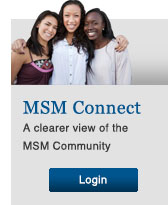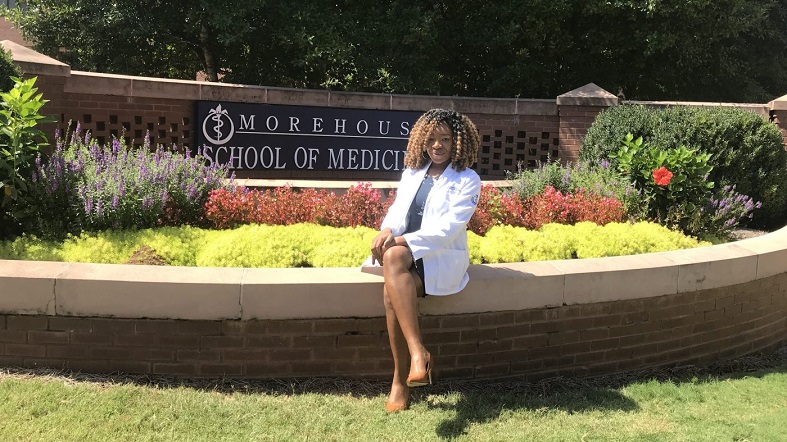HBCU Medical Students Hope NFL Initiative Helps Them Combat Health Care Disparities
Diversity in Sports Medicine Pipeline program pairs doctors in training with teams and their medical staffs.
By Mia Berry, Andscape
Fourth-year medical student Imari Parham’s most vivid childhood memories include watching the Dallas Cowboys on Thanksgiving and his family wearing Cowboys-themed face paint and jerseys as he studied in the background.
When Parham was selected for the NFL Diversity in Sports Medicine Pipeline Initiative in July and paired with the Cowboys, it thrilled the Dallas native. He received his undergraduate degree from Xavier University in Louisiana and attended Meharry Medical College, one of four historically Black college and university medical schools in the country.
“My whole family are huge Cowboys fans. … It was met with some tears from my mom and some screams,” he said. “My uncles were just in shock. They are like, ‘Nephew, see you out there.’”
The league launched the initiative in 2022 to diversify NFL club medical staffs by fostering a relationship with students interested in sports medicine careers. This year Parham is one of 16 participants from historically Black Charles R. Drew University of Medicine and Science in Los Angeles; Howard University College of Medicine in Washington; Meharry in Nashville, Tennessee; and Morehouse School of Medicine in Atlanta. The fellows hope to build connections with NFL personnel and advance their plans to treat patients in underserved communities.
During the program’s inaugural year, 14 students from HBCU medical schools were paired with eight NFL teams. Now in its second year the program has expanded to include medical students from other institutions, with 31 of the league’s 32 teams participating.
Students will have one-month rotations with their assigned teams and will be supervised by the teams’ medical personnel, including orthopedic team physicians, primary care team physicians and athletic trainers.
Timothy McAdams, head team physician for the San Francisco 49ers and president of the NFL Physicians Society, hopes the program will address the low number of Black physicians on team medical staffs.
“When you look at the makeup of the NFL, we have almost 60% of players that are Black that have team [medical] positions that are less than 5% are Black. That’s a big disparity,” McAdams said.
“The same problem has been seen in our orthopedic surgery ranks, where we have a very low percentage of orthopedic residents compared to other specialties that have done a better job at that the past few decades. So we’ve seen pipeline programs work in the orthopedic surgery realm and they’ve proven themselves.… I know they could work in the NFL.”
Los Angeles native Nonye Ikeanyi, who is paired with the Los Angeles Rams, is studying orthopedic surgery at Charles R. Drew University, the sole HBCU on the West Coast. Ikeanyi wants to represent her school well and believes the community atmosphere at Drew has prepared her to excel in the medical field.
“I think that [Drew] is a pretty special place that often may be forgotten. … Drew was founded out of the Watts riots, in the ’90s,” she said. “It really, like, shows you that Drew was formed because that community needed it and that the community really strives to protect it and it demands nothing less than perfection and respect from the providers that are there.”
Ikeanyi said she wants to live up to those expectations.
“I don’t know how many times I go to Drew, or I’m at MLK Community Hospital and people are just like, ‘You keep it up. We’re proud of you,’ ” she said. “I think that’s a validation and a sense of honor that you just don’t get when you were at UCLA and you’re constantly facing imposter syndrome.”
Ikeanyi’s goal is to become a pediatric orthopedic surgeon treating youths ranging from infants to young adults.
“[NFL players] are bigger, faster, stronger, but it’s still the same bones in the same muscles. … There are already 17-year-olds who are huge that are maybe not as big as some of these NFL players but are going to be pretty big guys and gals,” she said.
“They are going to have to be treated with the same type of care that you need when you are taking care of adults. I don’t think it’s going to be too hard to transfer some of the skills I will be taking right from the NFL to my future pediatric practice.”
Tope Elutilo-Ayoola, a child of Nigerian immigrants, decided to pursue medicine after noticing health care disparities while visiting family in the African country. Elutilo-Ayoola, who is a student at Morehouse School of Medicine in her hometown of Atlanta, is passionate about global health and reducing health disparities in underserved communities. She is paired with the Arizona Cardinals, and her personal goals for sports medicine extend far beyond the football field.
“All the information I learned throughout this experience and through my training as an orthopedic surgeon I plan on also taking back to Nigeria and also other countries in need who don’t have access to orthopedic surgeons,” she said.
“That’s really my ultimate goal, to take all the skills that I obtained throughout my medical journey … and hopefully give back to underprivileged communities, not just in the United States but also in other countries as well, then hopefully start my own initiatives that can contribute to orthopedic injuries or sports-related injuries in other countries.”
Howard medical student Bryan Beaubrun’s parents and two older sisters are members of the medical profession as well. Beaubrun is studying orthopedic medicine and will start his internship with the New England Patriots later this month.
“One of the main things is I want to see and just kind of learn at such, like, a high and elite level [is] the integration of care that you get between all the staff members, you know, between orthopedic surgeons, the athletic trainers, the physical therapists,” Beaubrun said. “I would love to either become a team physician or own and operate my own private practice. … I’m just planning on trying to be a sponge and just picking up all the little things that it takes to be an orthopedic surgeon and sports medicine doctor.”
Beaubrun plans to wear some Howard gear on the sideline, given the Patriots’ color scheme, which is similar to the Bison’s red, white and blue.
“I definitely want to just represent Howard and HBCUs and as a whole to show them that, you know, that we are amazing students,” he said. “We come prepared, work hard, we’re ready to grind out. We don’t complain, and we do what we need to do and get things done.”
Robert Emeh, who also attends the Howard University College of Medicine, is studying physical medicine and rehabilitation. He is a double HBCU graduate who attended Alabama State University for his undergraduate degree.
Like Elutilo-Ayoola, Emeh is the son of Nigerian immigrants and has witnessed the disastrous effects of inadequate health care.
“I’ve seen up close a lot of family members pass away from preventable health care situations due to inadequate health care, health care management or lack of health care resources,” Emeh said. “I want to be able to be in a position where I can help people who come from similar vulnerable populations and have a positive impact to kind of help mitigate those health care disparities.”
Heading into his one-month rotation with the Washington Commanders, Emeh is eager to observe the care pro athletes are given, curious to learn about research opportunities in the NFL in concussion prevention and excited to gain new professional connections.
“I really just want to represent Howard and make the most out of opportunities. I want to come to [the] Washington Commanders and learn as much as I can about sports medicine, what it has to offer, but also foster relationships [and] gain mentors from the experience that can last a lifetime,” Emeh said.
“Whether I end up coming back there, or I end up working for a local high school team, like, I would love to still be able to reach out to the people that I work with during this experience just to get their guidance.”
A year after the pilot program’s launch, McAdams has noticed how Black athletes are affected after being treated by Black doctors.
“It’s just immediately there’s a change and comfort level. … if I have a fellow that comes in and they come in with a medical student who happens to be Black,” McAdams said. “I do find that there’s ease and often some communication that will start with the player and the student about where they’re from and after I introduce them and they have some connections on some background of where they were coming from school.
“So it really helps build the trust and helps everybody do a better job and ultimately the importance of all of this is better care for the patient, the athlete.”
McAdams and the NFL Physicians Society want to expand their efforts beyond medical students to high school students. However, McAdams said data about the initiative’s efficacy is roughly five years out, as many members of last year’s class are currently pursuing residencies that could last from three to seven years.
Emeh hopes he can mentor other Black men looking to enter the sports medicine field.
“Being a Black man in this field is a responsibility that I’m willing to take on. I don’t want to be last, I want to be someone who helps garner more people who look like me to be in these positions and [are] trusted to get these positions,” Emeh said. “My work is going to speak for itself. I want to do a good job. It not only helps myself, but it also helps the people who are coming after me.”
Beaubrun also hopes his appearance on the sideline inspires others to reach for the same success.
“I would serve as kind of, like, a pillar or just … a totem to a lot of younger Black males who want to come up and do the same thing as me,” he said. “Mentorship is a big part of my story. If you’ve never seen something, you don’t know that you can dream it.”


